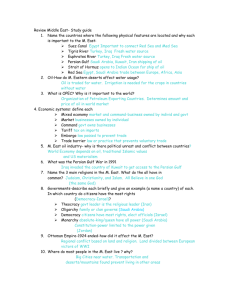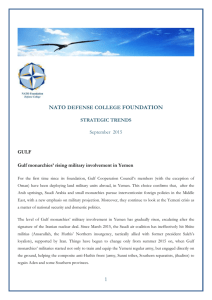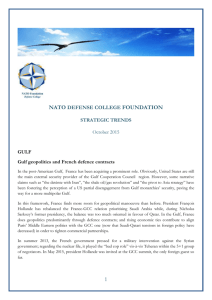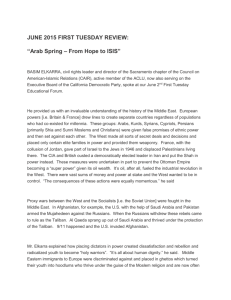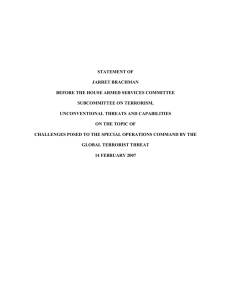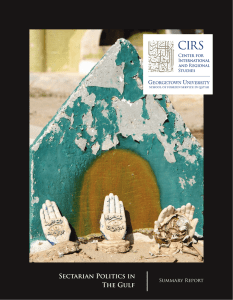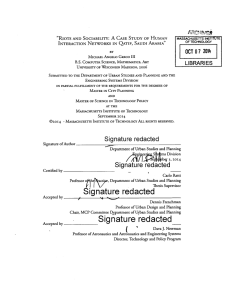nato defense college foundation strategic trends
advertisement
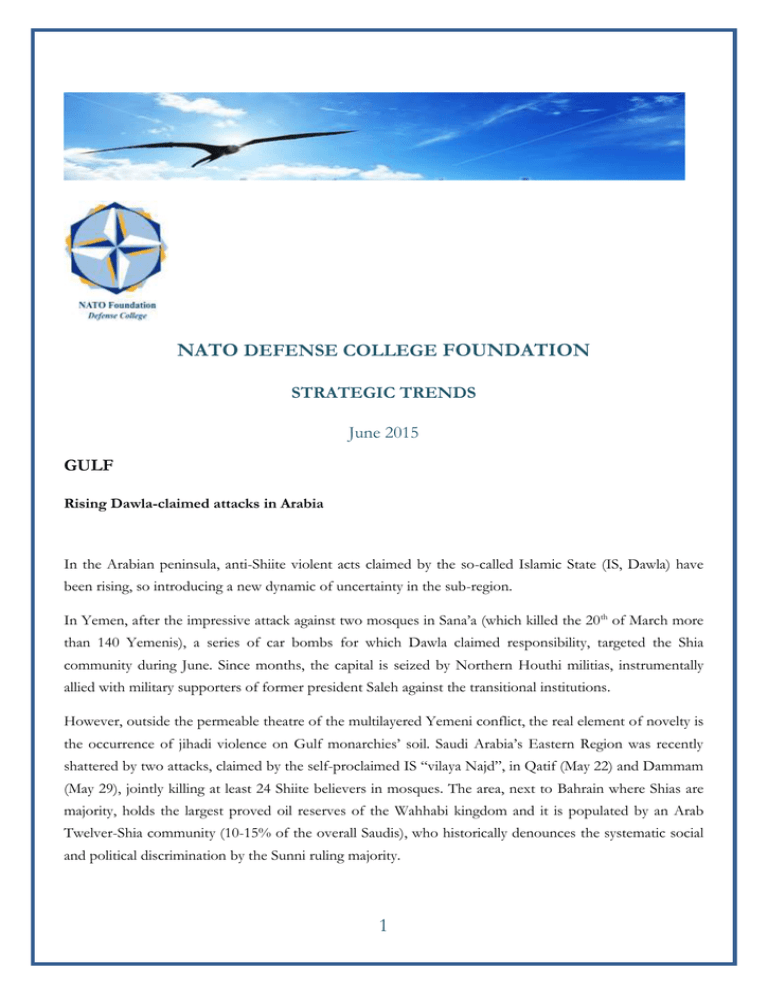
NATO DEFENSE COLLEGE FOUNDATION STRATEGIC TRENDS June 2015 GULF Rising Dawla-claimed attacks in Arabia In the Arabian peninsula, anti-Shiite violent acts claimed by the so-called Islamic State (IS, Dawla) have been rising, so introducing a new dynamic of uncertainty in the sub-region. In Yemen, after the impressive attack against two mosques in Sana’a (which killed the 20 th of March more than 140 Yemenis), a series of car bombs for which Dawla claimed responsibility, targeted the Shia community during June. Since months, the capital is seized by Northern Houthi militias, instrumentally allied with military supporters of former president Saleh against the transitional institutions. However, outside the permeable theatre of the multilayered Yemeni conflict, the real element of novelty is the occurrence of jihadi violence on Gulf monarchies’ soil. Saudi Arabia’s Eastern Region was recently shattered by two attacks, claimed by the self-proclaimed IS “vilaya Najd”, in Qatif (May 22) and Dammam (May 29), jointly killing at least 24 Shiite believers in mosques. The area, next to Bahrain where Shias are majority, holds the largest proved oil reserves of the Wahhabi kingdom and it is populated by an Arab Twelver-Shia community (10-15% of the overall Saudis), who historically denounces the systematic social and political discrimination by the Sunni ruling majority. 1 On June 26, a suicide terrorist detonated his bomb inside the Shia mosque al-Imam al-Sadeq in Kuwait City, killing 27 persons. It should considered as the most alarming episode in the aforementioned terrorchain, because Dawla has decided to hit a Gulf country where the Shia community is well integrated and peacefully coexists with the Sunni one. Moreover, Shiite merchant families are traditionally allied with the al-Sabah Sunni ruling dynasty, in order to counterbalance domestic Islamist movements. The level of interdependence between the Gulf and the Levant has been increasing since the start of the Syrian civil war; but for the first time, the jihadi violence, spread in the triangle Syria-Iraq-Lebanon, appeared in the stable GCC area. Since 2012-14, Kuwait was the regional hub for financial transactions to jihadi militias in Syria, through charities and private donors, due to a permissive legal framework for money transfer and association freedom. In fact, is the Gulf that has managed to spin Levantine’s dynamics till now, covering a political battle for regional leadership - as the Saudi-Iranian Middle Eastern Cold War is - under the effective mask of sectarianism. Moreover, it’s important to remind that strategic choices are not always related to confessional criteria; for instance, Saudi Arabia supported former Yemeni president Ali Abdullah Saleh (a Zaydi Shia) for more than thirty years, while Iran has been intensifying its connections with Afghan’s insurgency movements (also in Syria, against IS) notwithstanding its Sunni character. Islamic State’s attacks against GCC countries arrive when Syrian militias backed by Saudi Arabia, Qatar and Turkey have begun to coordinate their forces and operations, gaining control of the Northwestern areas, like the Idlib province. However, if the Syrian battlefield was the catalyser and then the propagator of jihadism, Yemen can be seen as the regional game-changer for Gulf monarchies’ security. The Saudi-led air military intervention against Shiite militias (some of them, the Houthis, politically supported by Teheran), started in March 2015, has brought the Saudi-Iranian indirect military confrontation just in the Arabian peninsula, inserting the external sectarian narrative within the complex Yemeni conflict, which instead has a strong native political and territorial genealogy. The wave of “IS” attacks in the Gulf monarchies could also signify the end of the so-called “extraversion pattern”, because Kuwait City and Qatif’s terrorists were both Saudi citizens: till now, Riyadh has in fact managed to externalise jihadi violence towards the foreign arc of crisis (Afghanistan, Iraq, Syria, Yemen), thereby protecting the kingdom and its neighbouring monarchies. The al-Qaeda’s campaign, which targeted Saudi Arabia between 2003-09, hit mainly security forces and US military personnel; instead, IS currently claimed attacks against the Gulf Shia community risk to tear inter-confessional relations in more dangerous way. In this regional framework, GCC countries and Israel share an implicit convergence of geopolitical interests: the containment of Iran, of the self-proclaimed Islamic State, the consolidation of president alSisi’s military rule in Egypt (also in order to quell the IS-affiliated Ansar Beit al-Maqdis, in the Sinai peninsula) and, last but not least, the attempt to keep the United States still engaged in regional security. 2
